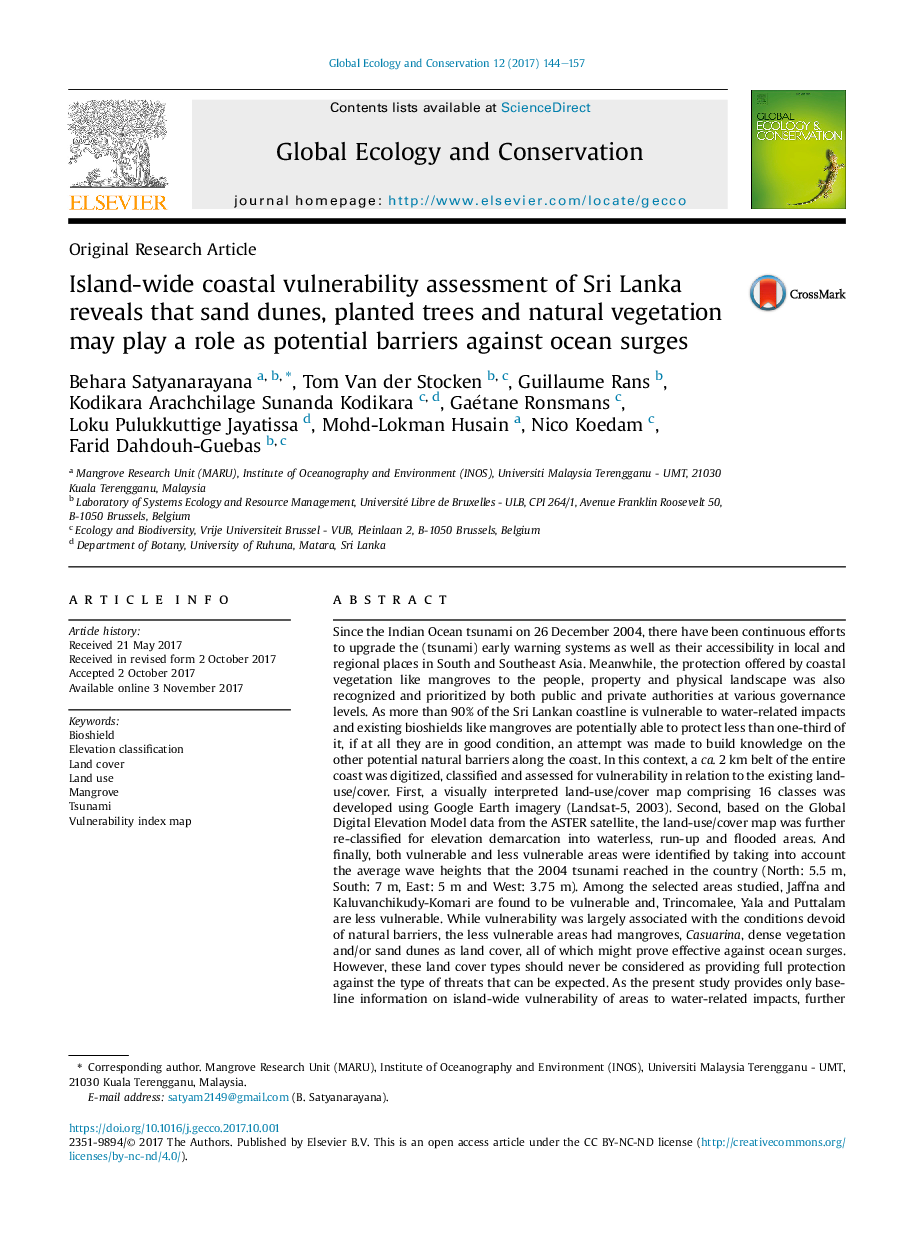| کد مقاله | کد نشریه | سال انتشار | مقاله انگلیسی | نسخه تمام متن |
|---|---|---|---|---|
| 8846252 | 1617655 | 2017 | 14 صفحه PDF | دانلود رایگان |
عنوان انگلیسی مقاله ISI
Island-wide coastal vulnerability assessment of Sri Lanka reveals that sand dunes, planted trees and natural vegetation may play a role as potential barriers against ocean surges
ترجمه فارسی عنوان
ارزیابی آسیب پذیری ساحل جزیره در سری لانکا نشان می دهد که تپه های ماسه ای، درختان کاشته شده و گیاهان طبیعی ممکن است به عنوان موانع بالقوه در برابر موج های اقیانوس نقش داشته باشند
دانلود مقاله + سفارش ترجمه
دانلود مقاله ISI انگلیسی
رایگان برای ایرانیان
موضوعات مرتبط
علوم زیستی و بیوفناوری
علوم کشاورزی و بیولوژیک
بوم شناسی، تکامل، رفتار و سامانه شناسی
چکیده انگلیسی
Since the Indian Ocean tsunami on 26 December 2004, there have been continuous efforts to upgrade the (tsunami) early warning systems as well as their accessibility in local and regional places in South and Southeast Asia. Meanwhile, the protection offered by coastal vegetation like mangroves to the people, property and physical landscape was also recognized and prioritized by both public and private authorities at various governance levels. As more than 90% of the Sri Lankan coastline is vulnerable to water-related impacts and existing bioshields like mangroves are potentially able to protect less than one-third of it, if at all they are in good condition, an attempt was made to build knowledge on the other potential natural barriers along the coast. In this context, a ca. 2Â km belt of the entire coast was digitized, classified and assessed for vulnerability in relation to the existing land-use/cover. First, a visually interpreted land-use/cover map comprising 16 classes was developed using Google Earth imagery (Landsat-5, 2003). Second, based on the Global Digital Elevation Model data from the ASTER satellite, the land-use/cover map was further re-classified for elevation demarcation into waterless, run-up and flooded areas. And finally, both vulnerable and less vulnerable areas were identified by taking into account the average wave heights that the 2004 tsunami reached in the country (North: 5.5Â m, South: 7Â m, East: 5Â m and West: 3.75Â m). Among the selected areas studied, Jaffna and Kaluvanchikudy-Komari are found to be vulnerable and, Trincomalee, Yala and Puttalam are less vulnerable. While vulnerability was largely associated with the conditions devoid of natural barriers, the less vulnerable areas had mangroves, Casuarina, dense vegetation and/or sand dunes as land cover, all of which might prove effective against ocean surges. However, these land cover types should never be considered as providing full protection against the type of threats that can be expected. As the present study provides only base-line information on island-wide vulnerability of areas to water-related impacts, further investigation and validation along similar research lines are needed to establish a blueprint for future preparedness.
ناشر
Database: Elsevier - ScienceDirect (ساینس دایرکت)
Journal: Global Ecology and Conservation - Volume 12, October 2017, Pages 144-157
Journal: Global Ecology and Conservation - Volume 12, October 2017, Pages 144-157
نویسندگان
Behara Satyanarayana, Tom Van der Stocken, Guillaume Rans, Kodikara Arachchilage Sunanda Kodikara, Gaétane Ronsmans, Loku Pulukkuttige Jayatissa, Mohd-Lokman Husain, Nico Koedam, Farid Dahdouh-Guebas,
